Skolt Sámi Heini Wesslin did not learn about her culture – now she hopes that truth and reconciliation process changes education
For Skolt Sámi Heini Wesslin, loss of language has been the tough issue in her life, while Inari Sámi Rauni Mannermaa still feels the burden of her days in a dormitory.
The stories and experiences of Wesslin and Mannermaa are familiar to the Sámi. The old events that still cause pain for the next generations would presently be considered serious violations. The purpose of the Truth and Reconciliation Commission is to look at these issues now.
After years of preparation, the historical Sámi Truth and Reconciliation Commission has started its work. The objective is to acknowledge and assess the wrongdoings that have been, and are still being, done against the Sámi. In addition, the Commission also aims at admitting and assessing the State’s assimilation policy and violations of rights.
The report of the Commission is to be submitted by the end of November 2023. Before that, the Commission has an enormous amount of work to do. The variety of experiences and expectations equals the number of people, but there is a common history behind them all.
Returned home when she got children
Heini Wesslin lives in the village of Sevettijärvi in the northeastern part of Inari Municipality. There is a strong sense of Skolt Sámi community in the village, and the local language and culture play a central role in Wesslin’s everyday life. But this has not always been the case.
When Wesslin was six, her family moved from her parent’s home village Sevettijärvi to Utsjoki. Wesslin got her primary and secondary education there. Although Utsjoki is in the Finnish Sámi Area, it is not the home region of the Skolt Sámi. Thus Wesslin did not get to learn about the Skolt Sámi and their culture at school.
Later, life and studies took Heini Wesslin to Helsinki, Inari and Rovaniemi. Finally, twelve years ago, she returned to Sevettijärvi. She moved there above all because she wanted to give her children a sense of belonging from the very day they were born.
“Despite the fact that I’ve lived in Sápmi, I have not lived in my own community. Therefore, it felt natural and important to move here.”
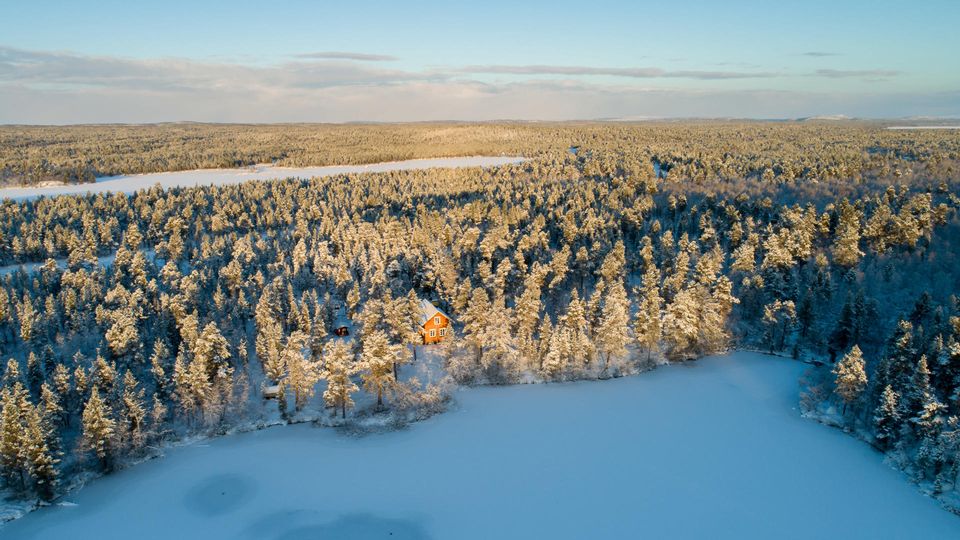
The Skolt Sámi language has had a great impact on Heini Wesslin’s choices in life. She did not learn her native language from her mother, who believed that not knowing the language would make Heini’s life easier. But Heini began to study the language as soon as it was possible.
At first, speaking the language was difficult for Heini Wesslin: she felt that she should already know the language. Today, she accepts that she does not always speak correctly, but at least she uses the language.
She speaks Sámi with her children. The children speak Skolt Sámi also with their grandmother, but for Wesslin herself it does not yet feel natural to speak the language with her mother.
“It’s extremely difficult to switch languages with certain people.”
Used handicraft to connection with culture
At present, Heini Wesslin knows the language and lives in a community with a strong Skolt Sámi culture. However, she has sometimes bad feelings about not having learned the language as a child.
“I’ve thought a few times that I could also be doing something else in the evenings instead of conjugating Skolt Sámi verbs via Teams.”
At first, Wesslin used doing Sámi handicraft, or duodji, to build up a connection to her culture.
“There’s also another language I speak: duodji.”
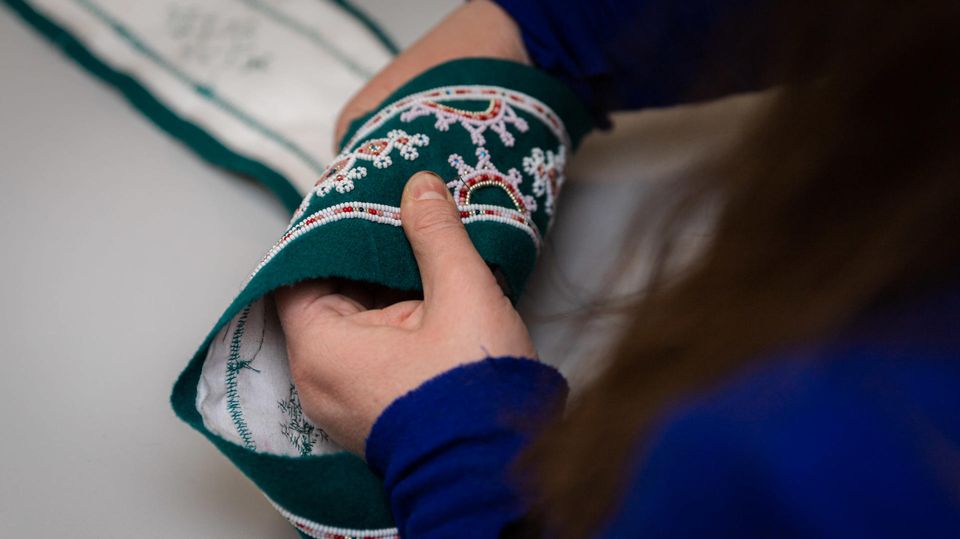
Wesslin began to wear the traditional Sámi clothing after her secondary education. She had crafted the Skolt Sámi dress together with her grandmother. Wearing Skolt Sámi clothing, finally, evoked many feelings in her.
“It was an important thing. I didn’t have a very strong sense of belonging then. It took a while to feel part of the community.”
At present, she makes the clothes for both her children and parents, helping them wear them. Wesslin’s parents belong to the generation who had to stay in dormitories, so they never learned to wear the traditional clothing. When Wesslin dressed her children in Skolt Sámi clothing, her parents also dared to start wearing it.
Today, she is a carrier of culture – as a result of many conscious choices. She did not get to learn about her culture at school, but hopes that everyone will have the opportunity in future.
“The biggest problem is that we’re not allowed to learn about ourselves. We learn the history and way of thinking of the dominant culture.”
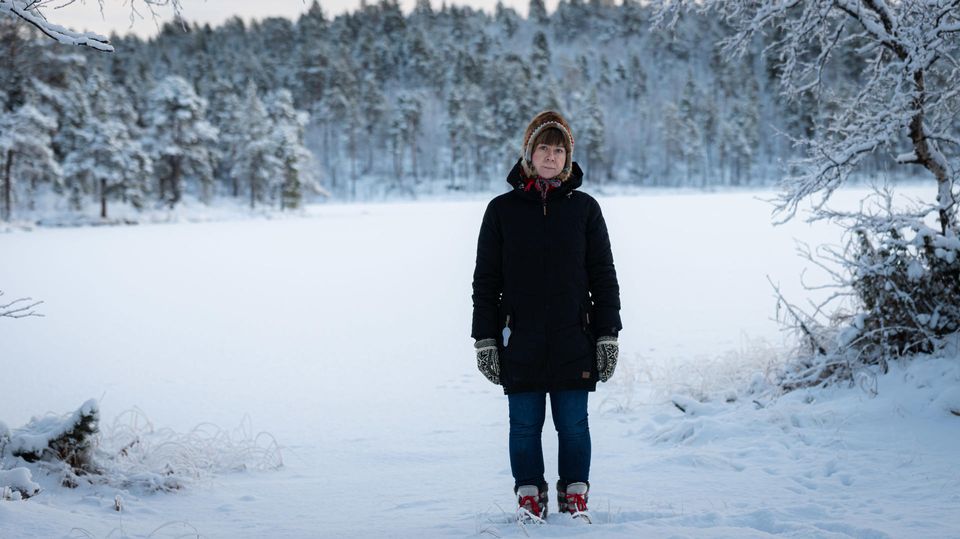
Wesslin hopes that the work of the Truth and Reconciliation Commission will change the situation and that the process will be careful and carried out on the terms of the Sámi. She hopes that the process will lead to changes both in health and social care and in the School.
Wesslin feels that this process of looking at history will also help the main population to understand its own history. The past may reveal answers that can help maintain the culture in future, too.
“If the process is carried out properly, we’ll all win.”
Both good and bad memories from school
Rauni Mannermaa was born into an Inari Sámi family on the Katsomasaari Island on Lake Inari in 1940. When she was four years old, her family was evacuated further south in the autumn. They were allowed to return home the next spring. Despite the war, everything was intact on the island.
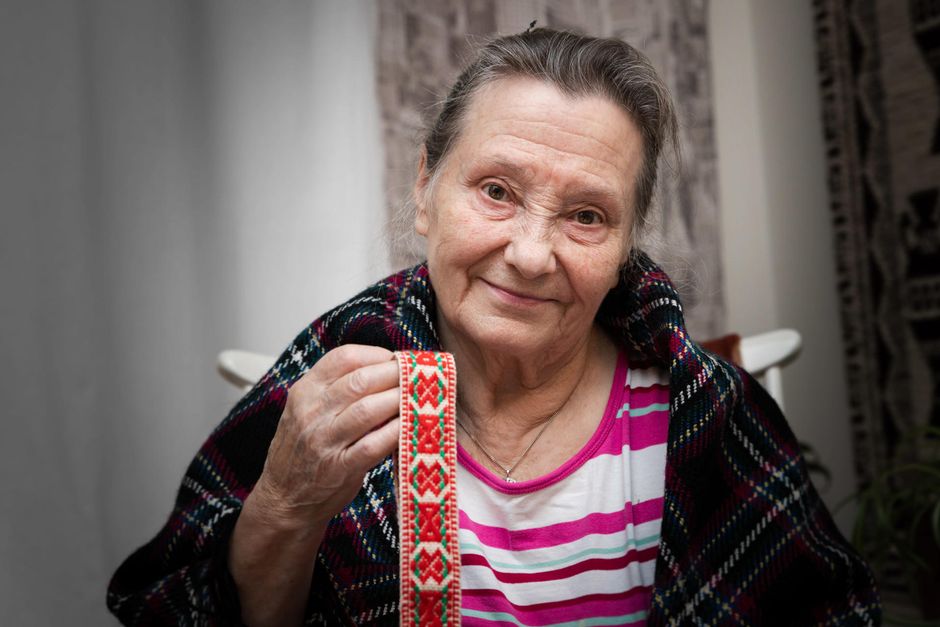
As soon as the next winter, Mannermaa’s life changed again dramatically. She fell ill and had to be taken to the village of Nellim 25 km away from home. From there, she was supposed to continue to the hospital. However, she got well, but there was no one to take her home, as it was not easy to travel in those days. The only possible means was being pulled by a reindeer. She thus stayed in Nellim and started school at the age of five, sitting in on classes at first.
Because of long distances, schoolchildren had to stay in dormitories. They got to go home only for Christmas and summer. Mannermaa has both bad and good memories of the period.
Mannermaa recalls how pupils could be punished physically both in the school and the dormitory. She remembers how they once pulled her by her hair so that her fringe came loose and there was a hairless spot on her skull. The reason was that the teacher thought she had talked in the evening after the pupils were supposed to be silent.

Mannermaa feels that being punished filled a child with shame even if they had done nothing wrong.
There are also worse memories, but Mannermaa chooses not to talk about them. The worst matters have also been tried in court.
“It was a long time ago, and the wrongdoers have been convicted. I don’t want to go into the worst things.”
The children never talked about their experiences at home. They had already forgotten them by the time they got home. There, they just wanted to enjoy being at home again.
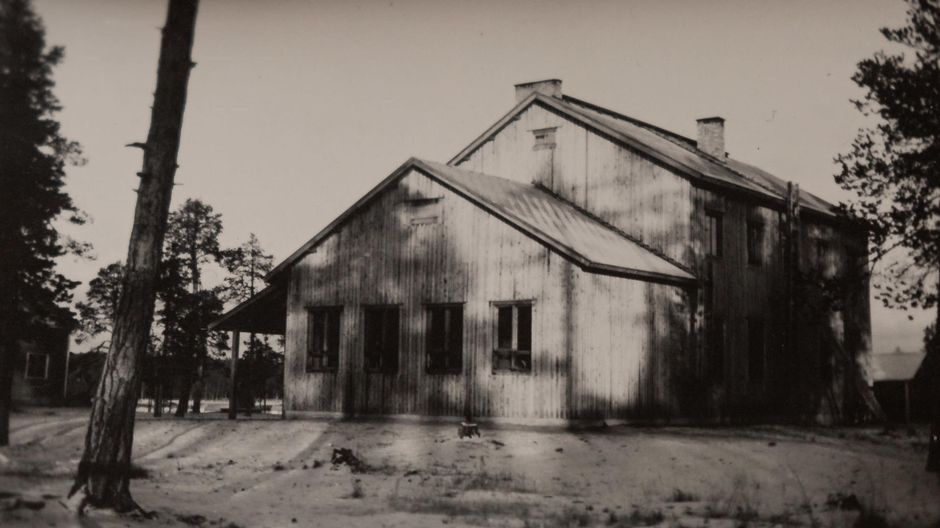
No speaking in Sámi unless everyone understood
There were strict rules both in the school and the dormitory, and no Sámi was spoken there. The personnel made it clear that no Sámi could be spoken unless everyone understood it. The children naturally obeyed the adults. Thus, they only spoke Sámi at home.
Not being able to speak the language lefts its mark.
Mannermaa has never learned to write in Sámi. As an adult, Mannermaa began to study Sámi in Inari, but quit the course as the distance from home to Inari was so long.
Mannermaa hopes that the Truth and Reconciliation Commission will take into consideration the people who wish to learn the language. Her view is that the State should have provided, and still should provide, support for studies in Sámi to those who did not get to learn their native language at school.
“I feel that the State should’ve given us resources.”
In addition to support for language studies and the acknowledgement of school-time experiences, Mannermaa hopes that the Commission’s work will lead to equality between all the Sámi – no matter which group of Sámi they belong to and whether they have studied or not.
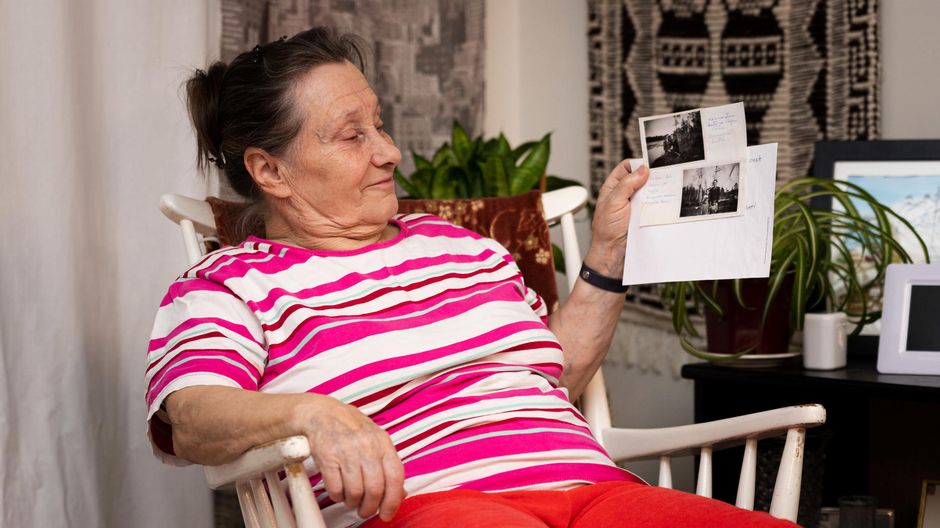
Mannermaa says that people earlier felt ashamed of being Sámi and avoided using their language. According to Mannermaa, this is the reason why so many “turned into Finns”. However, she feels that people have a right to their ancestry and culture even if their grandparents have tried to hide them.
“It was not their fault. It was the period when they attempted to turn us into Finns,” Mannermaa says.
Commission has begun its work
The Sámi Truth and Reconciliation Commission of Finland met for the first time in mid-November. The commissaries are Kari Mäkinen, Hannele Pokka, Heikki Hyvärinen, Miina Seurujärvi and Irja Jefremoff. Two of the commissaries were nominated by the Government of Finland, two by the Sámi Parliament and one by the Skolt Sámi Village Meeting.
Senior Specialist Nina Brander tells that the Commission will also choose a secretariat and chair for itself. In addition, the Commission will have a monitoring group that consists of members who represent parliamentary parties, the Sámi Parliament, the Skolt Sámi Village Meeting, the Evangelical Lutheran Church of Finland and the Orthodox Church.
When the Sámi Truth and Reconciliation Commission was founded, the significance of its work was emphasised by Finnish Prime Minister Sanna Marin at the briefing.
“This work is important because we need to transparently look at what has happened in Finnish history and how the Sámi have been treated, and still are treated, in Finland,” the Prime Minister said.
Translated from North Sámi by Kaija Anttonen






















No comments:
Post a Comment
Please: Share your reaction, your thoughts, and your opinions. Be passionate, be unapologetic. Offensive remarks will not be published. We are getting more and more spam. Comments will be monitored.
Use the comment form at the bottom of this website which is private and sent direct to Trace.